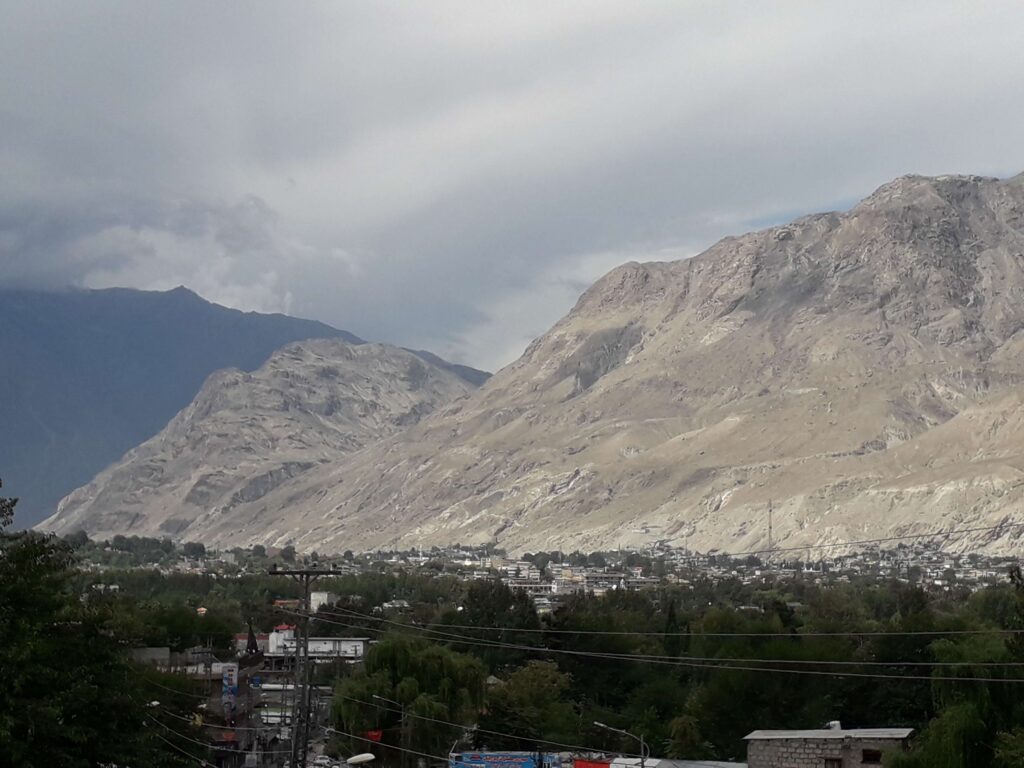The view from Pakistan: Is sustainable development possible?
Adventurer Ian Packham’s latest dispatch from the environmental crisis frontline, specifically Gilgit. Historically a timber-rich region, land is being increasingly repurposed for agriculture, with a potentially high cost.

The first section of my exploration on the impact of climate change in Pakistan comes to an end in Gilgit. Still surrounded by snow-capped mountains for nine months of the year (September being one of the months when this isn’t the case), it’s close to the meeting point of the Karakorum, Himalayas and Hindu Kush ranges.
Although once romanticized as the remotest frontier in the British Empire (the whole Hunza area I’ve already passed through never paid much attention to British colonial ambition), there isn’t in truth anything particularly romantic about modern day Gilgit.
It is, however, by far the largest population centre I’ve reached – the biggest city you’ll find this far north. Standing like a centurion on the Karakorum Highway, it also provides a useful place to stock up on essentials, such as Dairy Milk chocolate.
Despite this, Gilgit has had much closer links to China than London or Islamabad for decades. The treasures housed within Baltit Fort in nearby Karimabad are a sign of this. A UNESCO World Heritage Site approximately 800 years old, the fort itself is described as being built in ‘Tibetan style.’ Exhibits include banknotes from the 1920s printed with both Chinese and Persian characters (the script used prior to Urdu) in order to ease trade between the two cultures.

Situated on one arm of the ancient Silk Route, the people of Gilgit have been handling Chinese merchandise for hundreds if not thousands of years. It’s perhaps no surprise then that with Pakistan a developing economy, it was China which funded much of the Karakorum Highway, as well as re-engineering sections destroyed by the creation of Attabad Lake I reported on in my second post.
A prime purpose of the highway was to open up the region to development, something that needs beyond all else to be sustainable. For the Gilgit region – and Pakistan more widely – to develop following our own pattern would push the planet beyond ‘acceptable’ levels of atmospheric carbon, putting advisers from the west worried about China’s influence in a difficult position.
There are no easy answers, but several initiatives have been pushing small scale fruit farming, especially for the region’s dependent women. As I mentioned in my first post, its apples and apricots which dominate the Hunza River – ‘organic’ one farmer insists, as it raises the price his family can charge for their crop.

Further south, it’s walnuts. Mohammed quizzes me on the price of Chinese walnuts in UK supermarkets (an answer I fudge somewhat), before he thrusts half a dozen into my hands saying ‘they are smaller but much sweeter than the Chinese ones.’ He then gives me a pear-shaped apple, grown in the Switzerland-in-miniature of the Kaghan Valley.
Historically, the region has also been known for its forestry. Follow your nose to the sweet smell of freshly-cut wood and you’ll still find carvers and furniture makers in Gilgit, using designs that wouldn’t look out of place in Baltit Fort. But mature hardwood trees are becoming harder and harder to source as Pakistan’s mountain forests are cut down. Some in government go as far as blaming a ‘timber mafia’ for the problem.
A loss of trees isn’t solely a Pakistani issue, but with the wild and relatively fluid frontiers of the Karakorum Mountains to disappear into, the region runs the very real risk of turning from the Switzerland-in-miniature I’ve described, to something with a closer resemblance to Tolkien’s Mordor.
With time and the right approach for the people and the environment – factors which are often not considered together – it’s hoped the residents of Gilgit will tell you that being green doesn’t have to mean being worse off than before. If this fails, we’re sure to see a growing demand for financial reparations which would run into billions of pounds, pitting developing nations against developed ones to the benefit of no one.
Revisit Ian Packham’s previous dispatches from Pakistan:
Karakorum – The climate change frontline
New lakes form another risk in Karakorum
















